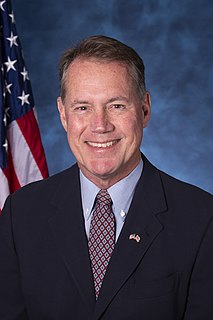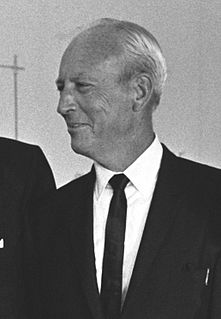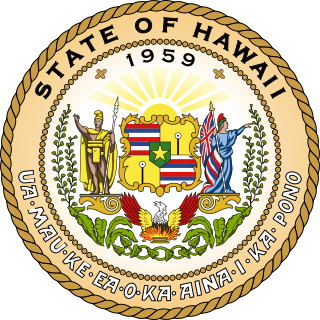
Edward Espenett Case is an American Democratic politician who is currently the U.S. Representative for Hawaii's 1st congressional district, which covers the urban core of Honolulu. He previously represented the 2nd district, which covers the rest of the state, from 2002 to 2007.

Mazie Keiko Hirono is a Japanese-born American politician serving since 2013 as the junior United States Senator from Hawaii. She is a member of the Democratic Party. Prior to her career in the Senate, Hirono served as a member of the Hawaii House of Representatives from 1981 to 1995 and as Hawaii's ninth lieutenant governor from 1994 to 2002 under Ben Cayetano. The Democratic nominee for Governor of Hawaii in 2002, Hirono was defeated by Republican Linda Lingle. From 2007 to 2013, she served as a member of the United States House of Representatives for Hawaii's 2nd congressional district.

Nelson Kiyoshi Doi, was the fifth lieutenant governor of Hawaii from 1974 to 1978 in the first elected administration of Governor George Ariyoshi. Doi was a member of the Hawaii Democratic Party.

The 2010 South Carolina gubernatorial election took place on November 2, 2010. Incumbent Republican Governor Mark Sanford was term limited and unable to seek re-election. Primary elections took place on June 8, 2010 and a runoff election, as was necessary on the Republican side, was held two weeks later on June 22.

The election for Governor of Delaware took place on November 4, 2008, coinciding with the United States presidential election. Democrat Jack Markell was elected governor, succeeding incumbent Ruth Ann Minner, also a Democrat, who was prevented from running for a third term.

The 1970 Georgia gubernatorial election was held on November 3, 1970. It was marked by the election as Governor of Georgia of the relatively little-known former state Senator Jimmy Carter after a hard battle in the Democratic primary. This election is notable because Carter, often regarded as one of the New South Governors, later ran for President in 1976 on his gubernatorial record and won.

The Arkansas gubernatorial election of November 8, 1966 was the first time since Reconstruction that a member of the Republican Party was elected governor.

The 2010 Illinois gubernatorial election took place on November 2, 2010. Incumbent Democratic Governor Pat Quinn sought and was elected to a full term in office. Quinn was elected as the Democratic nominee, the Illinois Green Party nominee was attorney and 2006 nominee Rich Whitney, the Republican nominee was State Senator Bill Brady, the Libertarian Party nominee was Lex Green, and Scott Lee Cohen ran as an independent. Governor Quinn won election to a full term in a very close race, beating Senator Brady by only about 32,000 votes, despite Brady winning in 98 of 102 Illinois counties.

The 2002 Hawaii gubernatorial election was held on November 5, 2002 to select the Governor of Hawaii. Incumbent Democratic Governor of Hawaii Ben Cayetano was term-limited and therefore could not run for re-election. Former Maui Mayor Linda Lingle, who had narrowly lost the 1998 election, was nominated once again by the Republicans while Lieutenant Governor Mazie Hirono earned the Democratic nomination in a tightly fought race. Lingle and Hirono duked it out in a toughly-fought campaign, with Hirono's campaign crippled by allegations of corruption within the Hawaii Democratic Party and many voters desiring a change. Ultimately, Lingle won out over Hirono in one of the state's closest gubernatorial elections, allowing her to become the first Republican Governor of Hawaii since 1962 and the state's first female Governor ever.

The 2010 Vermont gubernatorial general election took place on November 2, 2010. Vermont is one of two states where the governor serves for a two-year term instead of four years. The primary election took place on August 24, 2010.

The Hawaii gubernatorial election of 2010 was held on November 2, 2010 to elect the next Governor and Lieutenant Governor of Hawaii. The winning candidates served a four-year term from 2010 to 2014. Incumbent Republican Governor Linda Lingle was term-limited in 2010 and not eligible to run for re-election. Former congressman Neil Abercrombie was declared the winner, defeating lieutenant governor Duke Aiona. Abercrombie was sworn in as the state's seventh Governor on December 6, 2010.

The 2014 Hawaii gubernatorial election took place on November 4, 2014, to elect the Governor of Hawaii, concurrently with a special election to Hawaii's Class III Senate Seat, as well as other elections to the United States Senate in other states and elections to the United States House of Representatives and various state and local elections.

The 1962 Hawaii gubernatorial election was Hawaii's second gubernatorial election. The election was held on November 6, 1962, and resulted in a victory for the Democratic candidate, former Territorial Delegate John A. Burns over Republican William F. Quinn, the incumbent Governor of Hawaii. The election was a rematch between the candidates of the previous election, with the outcome reversed. Burns received more votes than Quinn in every county in the state.

The 1966 Hawaii gubernatorial election was Hawaii's third gubernatorial election. The election was held on November 8, 1966, and resulted in a victory for the Democratic candidate, incumbent Governor of Hawaii John A. Burns over Republican candidate, State Senator Randolph Crossley. Despite the close race, Burns received more votes than Crossley in every county in the state except Honolulu, which Crossley won by less than one percentage point.

The 1970 Hawaii gubernatorial election was Hawaii's fourth gubernatorial election. The election was held on November 3, 1970, and resulted in a victory for the Democratic candidate, incumbent Governor of Hawaii John A. Burns over Republican candidate, Judge Samuel Pailthorpe King. Burns received more votes than King in every county in the state.

The 1978 Hawaii gubernatorial election was Hawaii's sixth gubernatorial election. The election was held on November 7, 1978, and resulted in a victory for the Democratic candidate, Governor George Ariyoshi over Republican candidate, State Senator John R. Leopold and three other candidates. Ariyoshi received more votes than any other candidate in every county in the state.

The 1982 Hawaii gubernatorial election was Hawaii's seventh gubernatorial election. The election was held on November 2, 1982, and resulted in a victory for the Democratic candidate, Governor George Ariyoshi over Frank Fasi, running as an Independent Democrat, and the Republican candidate, State Senator D. G. Anderson. Ariyoshi received more votes than any other candidate in every county in the state.

The 1986 Hawaii gubernatorial election was Hawaii's eighth gubernatorial election. The election was held on November 4, 1986, and resulted in a victory for the Democratic candidate, Lt. Gov. John D. Waihee III over the Republican candidate, State Senator D. G. Anderson. Waihee received more votes than Anderson in every county in the state.

The 1990 Hawaii gubernatorial election was Hawaii's ninth gubernatorial election. The election was held on November 6, 1990, and resulted in a victory for the Democratic candidate, incumbent Governor John D. Waihee III over the Republican candidate, State Representative Fred Hemmings. Waihee received more votes than Hemmings in every county in the state.

The 2018 Hawaii gubernatorial election took place on November 6, 2018, to elect the Governor of Hawaii and Lieutenant Governor of Hawaii.





























